
Gallaudet University is a private federally chartered university in Washington, D.C., for the education of the deaf and hard of hearing. It was founded in 1864 as a grammar school for both deaf and blind children. It was the first school for the advanced education of the deaf and hard of hearing in the world and remains the only higher education institution in which all programs and services are specifically designed to accommodate deaf and hard of hearing students. Hearing students are admitted to the graduate school and a small number are also admitted as undergraduates each year. The university was named after Thomas Hopkins Gallaudet, a notable figure in the advancement of deaf education.

Deaf culture is the set of social beliefs, behaviors, art, literary traditions, history, values, and shared institutions of communities that are influenced by deafness and which use sign languages as the main means of communication. When used as a cultural label especially within the culture, the word deaf is often written with a capital D and referred to as "big D Deaf" in speech and sign. When used as a label for the audiological condition, it is written with a lower case d. Carl G. Croneberg coined the term "Deaf Culture" and he was the first to discuss analogies between Deaf and hearing cultures in his appendices C/D of the 1965 Dictionary of American Sign Language.
The Louisiana School for the Deaf is a state school for deaf and hard-of-hearing students in Louisiana, located in Baton Rouge, the state capital. It was established in 1852 as a joint school for blind students. In 1860, its first purpose-built facility was completed and admired as an elegant monument to philanthropy. The schools were divided in 1898, and in 1908, Louisiana School for the Deaf was renamed.
Oralism is the education of deaf students through oral language by using lip reading, speech, and mimicking the mouth shapes and breathing patterns of speech. Oralism came into popular use in the United States around the late 1860s. In 1867, the Clarke School for the Deaf in Northampton, Massachusetts, was the first school to start teaching in this manner. Oralism and its contrast, manualism, manifest differently in deaf education and are a source of controversy for involved communities. Oralism should not be confused with Listening and Spoken Language, a technique for teaching deaf children that emphasizes the child's perception of auditory signals from hearing aids or cochlear implants.
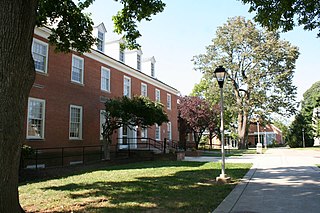
The Maryland School for the Deaf (MSD) offers public education at no cost to deaf and hard-of-hearing Maryland residents between the ages of zero and 21. It has two campuses located in Frederick and Columbia, Maryland.
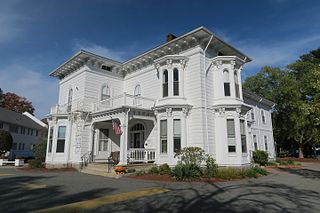
The Learning Center for the Deaf (TLC) is a Framingham, Massachusetts-based non-profit organization and school serving deaf and hard-of-hearing children and adults.
The Model Secondary School (MSSD) is a residential four-year high school for deaf and hard-of-hearing students located on the Gallaudet University campus in Washington, D.C.
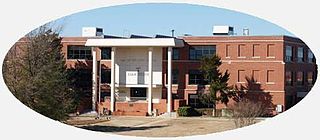
Oklahoma School for the Deaf (OSD) is a public residential school for the deaf and hard of hearing students ages 2 through 18. The school teaches K-12 students in Sulphur, Oklahoma, United States.

Indiana School for the Deaf (ISD) is a fully accredited school for the deaf and hard of hearing, located in Indianapolis, Indiana.
Bilingual–Bicultural or Bi-Bi deaf education programs use sign language as the native, or first, language of Deaf children. In the United States, for example, Bi-Bi proponents state that American Sign Language (ASL) should be the natural first language for deaf children in the United States, although the majority of deaf and hard of hearing being born to hearing parents. In this same vein, the spoken or written language used by the majority of the population is viewed as a secondary language to be acquired either after or at the same time as the native language.
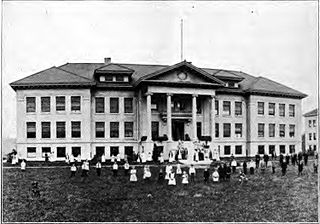
Oregon School for the Deaf (OSD) is a state-funded school in Salem, Oregon, United States. It serves deaf and hard of hearing students from kindergarten through high school, and up to 18 years of age.

The Minnesota State Academy for the Deaf (MSAD) is a public residential school serving deaf children in Minnesota, United States. It is one of two Minnesota State Academies in Faribault and operated by the state for particular student populations.

The Nebraska School for the Deaf, or NSD, was a residential school for Deaf students in kindergarten through Grade Twelve at 3223 North 45th Street in Omaha, Nebraska, United States. Founded in 1869, the school closed in 1998. The school attracted national attention throughout its existence, first for controversial teaching practices and then for its closure.

Deaf education is the education of students with any degree of hearing loss or deafness. This may involve, but does not always, individually-planned, systematically-monitored teaching methods, adaptive materials, accessible settings, and other interventions designed to help students achieve a higher level of self-sufficiency and success in the school and community than they would achieve with a typical classroom education. There are different language modalities used in educational setting where students get varied communication methods. A number of countries focus on training teachers to teach deaf students with a variety of approaches and have organizations to aid deaf students.
Scranton State School for the Deaf (SSSD) was a residential school for the deaf established in 1880 in Scranton, Pennsylvania, United States. Its students ranged in age from birth to 21. At the end of the 2008–09 school year, the school was turned over from state management to the Western Pennsylvania School for the Deaf. The new school was renamed Scranton School for Deaf and Hard-of-Hearing Children.
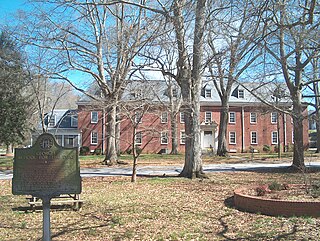
Georgia School for the Deaf (GSD) is a public residential school for the deaf. GSD provides comprehensive education and services to deaf and hard-of-hearing students between the ages of three and twenty-two. Located in Cave Spring, Georgia, United States, the school offers day and residential programs which meet the academic, social and physical needs of students in a bilingual environment. It was established in 1846 and is one of three public state schools operated by the Georgia Department of Education.
Iowa School for the Deaf is a pre-K to 12th grade school for deaf and hard-of-hearing students located in Council Bluffs, Iowa. It serves students who live in Iowa and Nebraska.
The history of deaf education in the United States began in the early 1800s when the Cobbs School of Virginia, an oral school, was established by William Bolling and John Braidwood, and the Connecticut Asylum for the Deaf and Dumb, a manual school, was established by Thomas Hopkins Gallaudet and Laurent Clerc. When the Cobbs School closed in 1816, the manual method, which used American Sign Language, became commonplace in deaf schools for most of the remainder of the century. In the late 1800s, schools began to use the oral method, which only allowed the use of speech, as opposed to the manual method previously in place. Students caught using sign language in oral programs were often punished. The oral method was used for many years until sign language instruction gradually began to come back into deaf education.
The Governor Baxter School for the Deaf (GBSD), formerly known as the Maine School for the Deaf is a public co-educational school that serves the deaf and hard-of-hearing in the State of Maine. It is located on Mackworth Island, an approximately 100-acre (40 ha) island in Falmouth, Maine, USA, adjacent to its border with Portland, Maine. Students who live far away may stay with host families, who provide residential services. Its program is the Maine Educational Center for the Deaf and Hard of Hearing (MECDHH).
Deafness in Thailand refers to the population and culture of Deaf Hard of Hearing people in Thailand. Deafness in Thailand includes language emergence, organizations, healthcare, employment, schooling, and civil rights.













